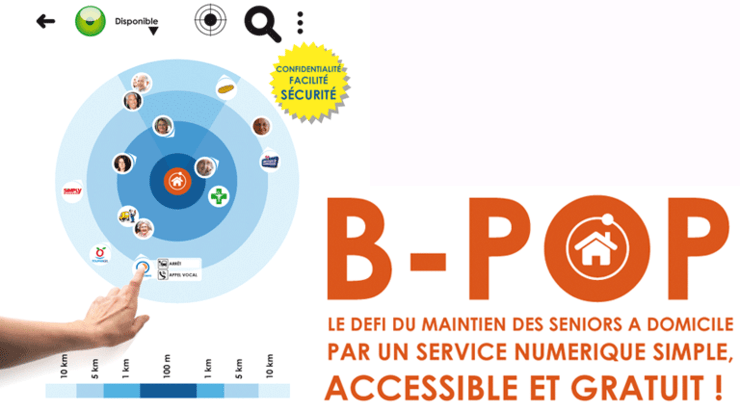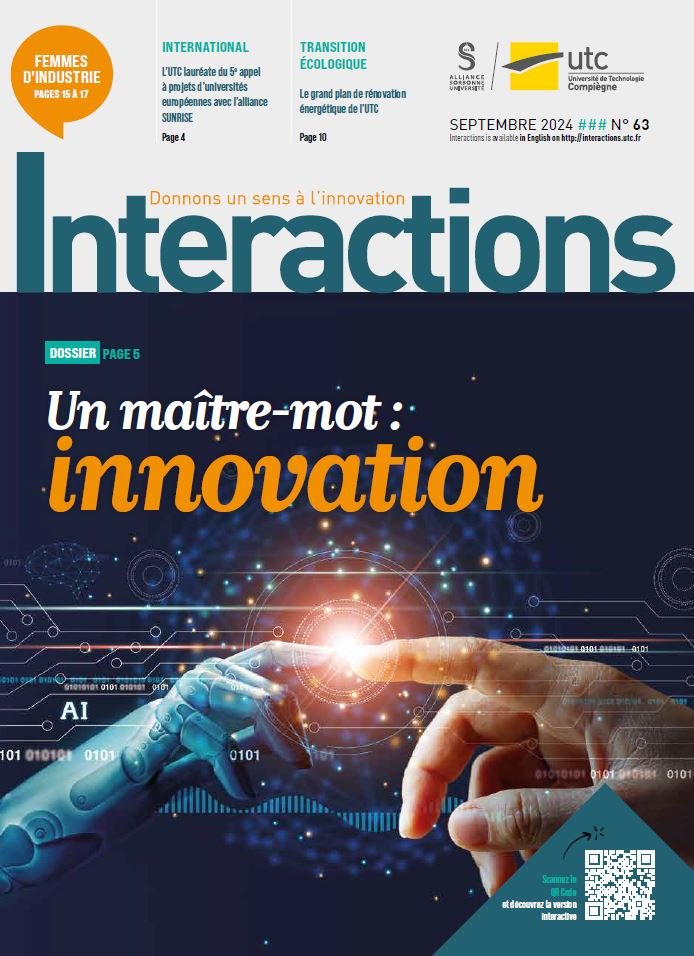Design, through experience and interaction

If technical drawings are still used by designers, some, like Anne Guénand, research scientist and lecturer in Industrial Design (GM-IDI) at UTC would like to introduce experimentation and interaction with ‘objects’ as early as possible in the design process. Both a hand-on presence and sensorial interaction are integrated to the devices she has imagined, with a view to improving the “togetherness” of all involved.
The question is whether the numerous tools used to enable and enhance ‘geolocalised’ meetings — gaining in momentum as they are — should be devoted only to looking for a soul-mates or indulging in carnal pleasures?
As Anne Guénand — in charge of the specialty User eXperience Design in the Sciences and Technologies Master’s degree at UTC and who teaches in the Industrial Design specialty of the Mechanical Engineering elective major (GM-IDI) — sees it, these tools could also serve to improve the “being together” in a wide variety of manners. For this purpose, she has spent several years developing innovations for specific situations.
B‑Pop, connected senior citizens
Her first innovation, baptized B‑Pop, was devolved from the observation that as senior citizens gradually lose their senses, they find themselves significantly cut off from the world. B‑Pop is a tool designed to compensate for sense loss via a connected interface that somewhat restores means to act to the user.
“Perception is the keystone to all actions and action itself enhances perception”, explains Anne Guénand, underscoring that the positive feedback of perceptive experience. B‑Pop allows the person to sense the presence of nearby people and services thanks to a Smartphone “App” and the Internet. The user is geolocalised and all the services noted by the “app” are notified to the user as well as the list of relevant contacts in the platform base.
A device co-developed with the end-users
“We realized, working for some 3 years with the senior citizen Soiron Club, that the users did not in fact wish to benefit from an additional technical aid, but rather an aid to reposition themselves as subjects who had regained a degree of autonomy”, notes Anne Guénand. B‑Pop was co-developed with the club members — i.e., it is a bottom-up development, inspired by the real needs expressed by the users.
Today, further development of the device is in the hands of a start-up company, part of the local ecosystem for innovation and creativity in Compiegne, with the objective to provide this service free of charge to the local seniors. “My role consisted of initiating the project and assuring the follow-through to see that it really came up to the beneficiaries’ expectations”, details our research scientist. The project — with financial support from the Picardie regional authorities — is managed by a steering committee that groups together the Picardie Region, the Department Oise, Greater Compiegne, the CCAS, UTC, the Institute Godin and the Club Soiron.
Fragility and “universal design”
Today this device is being experimented with various groups of senior citizens living in and around Compiegne. This phase should then lead on to the Oise Department, the spread to the Region, to France and thereafter be launched internationally. Indeed, it requires only a minimum amount of adaptation to be useable in other countries and it remains identical I terms of resources, whatever the number of persons connected to the platform.B‑Pop began in 2013 as the winner of a call for a show of interest for the social and solidarity economic policy of the Picardie Region.
“I have always been interested in “fragile” situations and my research in design work was focused on “universal” design” concepts”, underlines Anne Guénand. The idea was to design equipment that would prove useful and/or accessible to everyone, and not leave anyone out. As she sees things, “a good design is one that is universal in its applications; it must comply with the needs expressed by some, offer services to many others and be useful to all”.
An example of such a universal design as an access ramp: absolutely vital for handicapped persons with reduced mobility, practical for a great many others and used by all. According to our design specialist “France was lagging behind the Northern European countries in this area but is now becoming increasing aware of the issues and ongoing changes”.
Innovation through experience
The concept of universal design is gaining ground and the objects created are rather original, and pleasant. Traditionally, a designer will start work on a drawing before making the first object mock-ups, whereas universal design proposes vert rapid experimentation of the object and its uses(s). “The interactions you have with the object quickly underscore the physical and operational limits and open the paths to new experiences”, says Anne Guénand for whom design work is decidedly user-experience-driven. The Master User Experience Design section that she heads, based on this principle, helps students learn how to design by experience.
The so-called “Quick and Dirty mock-ups” are rapidly put together to explore the interactions via scenario play scenes. By ‘staging’ the inventions, you facilitate emergence of the final shape. This approach is based on the theory of perception that considers the object not as something inert on a shelf but as an object with which users interact.
“The method is creative inasmuch as practice opens up new possibilities in terms of experiences to come and design of new sociotechnical systems”, notes the research worker Guénand.
LinkMe up, a ‘hands-on presence’ value
Interaction lies at the heart of Anne Guénand’s research activities, witness her LinkMe Project. “At conference venues, this device follows the participants and notes their interactions, going as far as suggesting new contacts to meet”, she explains. LinkMe is a networking system with 150 badges, 7 sensor-equipped tables, a giant screen and an interactive table which brings all the data together simultaneously and in real-time.
It was initially developed in 2013, and tested successfully at the 4th Tremplin (UTC alumni association) godfathering event at UTC. The event brought together some 120 persons, half of whom were UTC alumni godfathering the other half, viz., the students. “The device served as a social interplay booster on the principle that ‘the friends of my friends are also my friends too’ ”, adds Anne Guénand. At an international UTC meeting, the objective would consist of integrating the ‘hands-on presence’ in the core activities of the conference for the purpose of using the data collected to set up the evening gala dinner seat-placing arrangements.
Juke Box, when gesture marries music
“This new trend to possess connected objects reflects a desire to tool up the ‘togetherness’ feeling,” says Anne Guénand, for whom ‘togetherness’ also means ‘sharing’, for example one’s preferred music at an evening event. How do you compose a play-list from music stored on peoples’ smartphones? Juke Box is a station that can connect simultaneously up to 6 other devices and to play their music contents.
The equipment has a very 1950s look about it, comprising a luminous tube with a translucid ring round it that enables the ‘disk jockey to choose pieces by simply moving the smartphone in the vicinity. “Here we present a device that makes sharing music a convivial activity, with the device reacting also to the way the ring is moved to choose the music”, adds Anne Guénand. A brisk move brings in a hot dance theme while a slow move sets up a languorous, cheek-to-cheek, dance sequence.
Today, the device is in its prototype stage, with the aim to parameter an optimal size and an acceptable price tag. It is elegant and unexpected design, and its operation is simple and very intuitive. And just like the LinkMe device above, the Juke Box has the possibility of invoking augmented social relationship reality, helping to share the choices that make the ambience of a musical evening After 15 years at the UTC-Roberval Laboratory, Anne Guénand moved over to the Costech Lab to join the Cognition Research and Enaction Design team.
And today, even if the technical dimensions in innovative work are unavoidable, Anne still feels that creativity depends above all other considerations on the experience a person has, and his or her active perception of the environment and possible courses of action open and that remain to be invented.
“Unabated rationalization has forced industrialists to design objects that are partly identical to others, since they comply with a strictly technical specification, but do not take into account sufficiently the users’ real experience”, concludes Anne Guénand who sees here an end to a standardization trend. Consumers are getting sick and tired of seeing uniform products and industrialists really need to rethink their products and thereby, hopefully, regain a degree of creativity.




